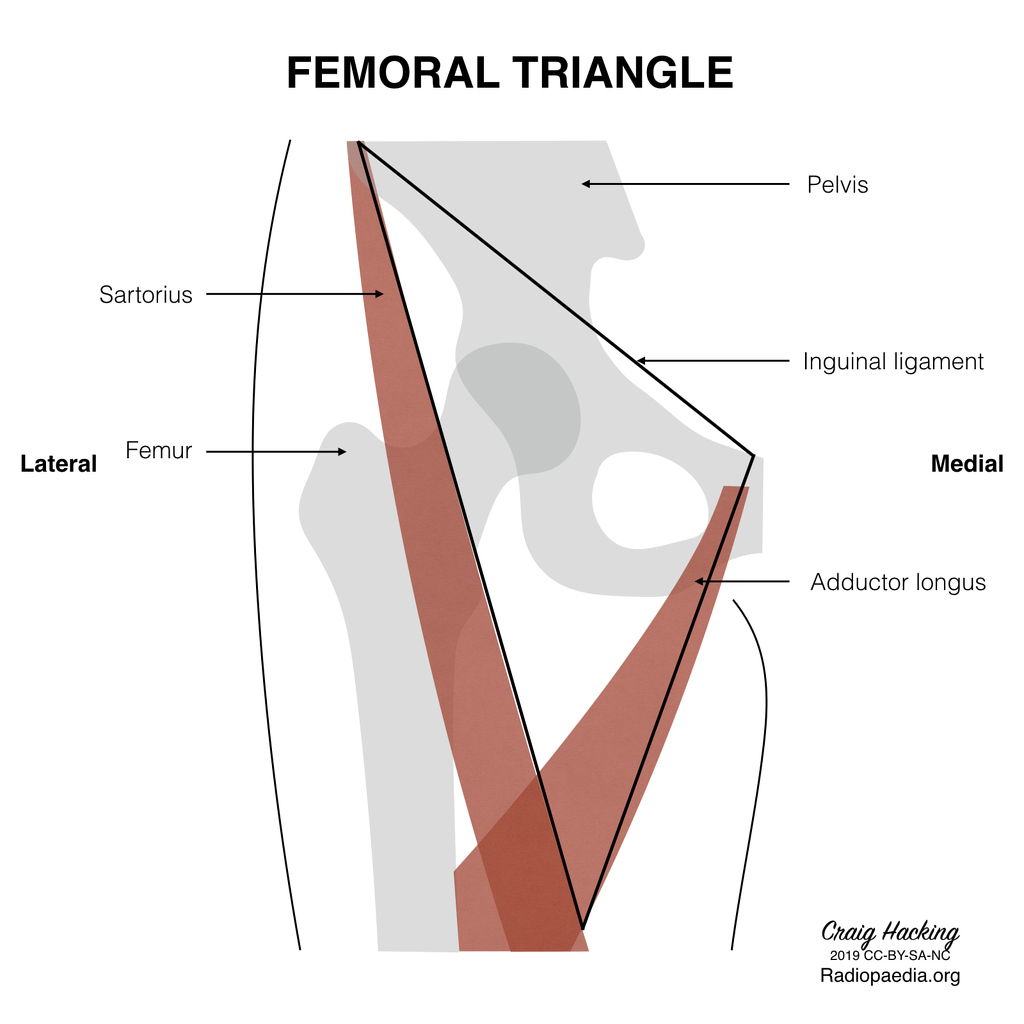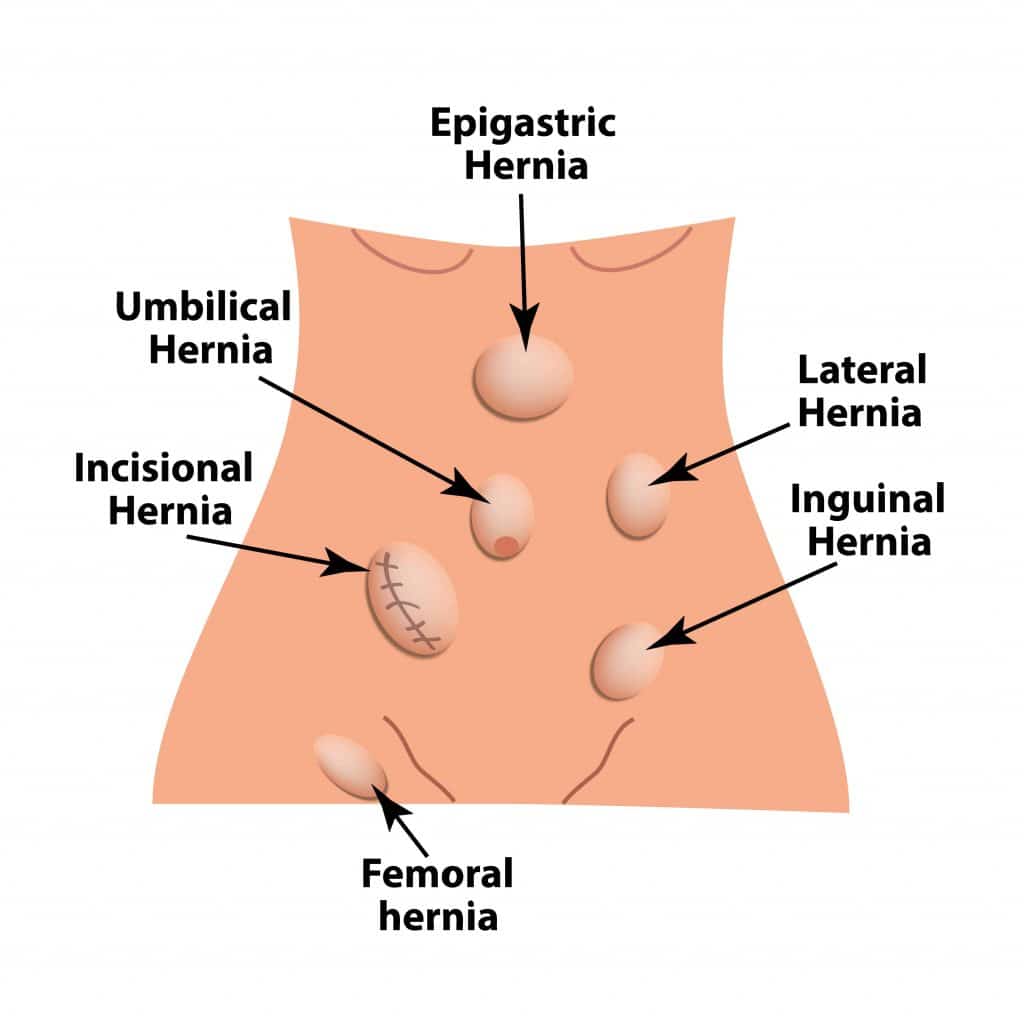Femoral Triangle
- The femoral triangle (or Scarpa's triangle) is an anatomical region of the upper third of the thigh. It is a subfascial space which appears as a triangular depression below the inguinal ligament when the thigh is flexed, abducted and laterally rotated.
- superiorly (also known as the base) by the inguinal ligament.
- medially by the medial border of the adductor longus muscle.
- laterally by the medial border of the sartorius muscle.
- Apex which is directed downward , is formed by the point where the medial and lateral boundaries cross.
- Apex is below with the adductor canal.
-

- Skin.
- Superficial Fascia.
- Deep fascia.
- Medially by the addacture longus and pectinious.
- Laterly by the psoas major and iliacus.

- Femoral artery and its branches.
- Femoral vein and its tributaries.
- Femoral sheath encloses the upper 4cm of the femoral vessels.
- Femoral nerve
- The femoral branch of genitofemoral nerve.
- Later cutaneous nerve of the thigh.
- The nerve of pectineus.
- Femoral hernia : The femoral canal is an area of potential weakness in the abdominal wall through which abdominal contents may buldge out forming the femoral harnia.
- Abnormal obturator artery : The normal obturator artery is a branch of the internal iliac.
- Swellings in the femoral triangle:
- Can be caused by:
- Femoral hernia
- Inflamed/ enlarged lymph nodes
- Abcess
- Lipoma
- Aneurisms of the vessels
- Neuromas
- Muscle tumors
- Psoas abcess, usually arising from TB spine
- The artery can be pressed against the iliopubic eminence below the inguinal ligament at the mid-inguinal (femoral point), to reduce bleeding from a distal cut.
- Lateral cutaneous nerve of thigh may get entangled in the inguinal ligament. This leds to the painon the lateral side of thigh. it is called "meralgia parasthetica".








No comments:
Post a Comment